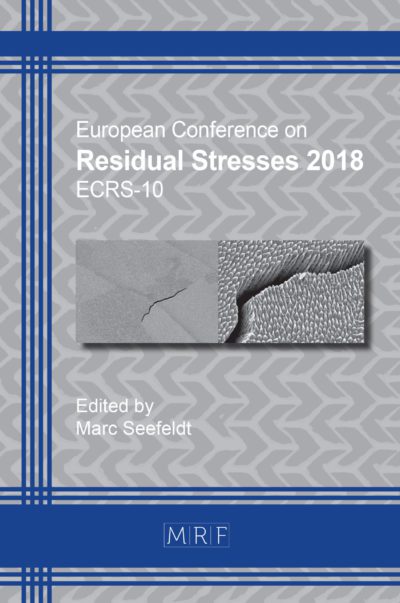A cost-effective cold roll-forming FE model for industrial applications
Senart Timothy, Mathieu Gauchey
Abstract. Cold Roll Forming (CRF) is one of the most productive processes for manufacturing thin-walled products with constant cross section. It consists in a continuous bending operation of a long metal sheet. The sheet is gradually formed through pairs of rotating rolls (called stations) until the desired cross-sectional configuration is obtained (see Fig. 1). The CRF process is widely used in aerospace, construction, automotive and other industries with large production volumes [1]. Roll-forming processes gained high interest in the industry to form Ultra-High Strength Steels (UHSS). These steel grades permit to pursue advanced structural optimization and to achieve lighter design solutions. The extensive application of roll forming can be due to its increased deformation capability and the limitations of UHSS when formed through traditional stamping processes [2]. However, CRF remains a complex process and it is affected by different problems, such as wave, torsion, twist or bow defects and elastic spring back [3]. Finite Element Analysis (FEA) is employed at the industrial level as an efficient and economical tool to examine the process. The objectives of this research are: (a) to develop a Finite Element (FE) model using the commercial software to simulate the cold roll-forming process of a U-shaped profile and then to validate it through a correlation with the experiment; (b) to be representative of defect during manufacturing process and help industrial to correct them; (c) to better understand the effects of the manufacturing process on the performance of the final product. The use of a commercial FE software (LS-Dyna) makes simple the process of integrating strain and stress fields due to manufacturing into existent FE models.
Keywords
Cold Roll Forming, High Strength Steel, Computational Efficiency, Impact of Manufacturing Process
Published online 5/7/2025, 6 pages
Copyright © 2025 by the author(s)
Published under license by Materials Research Forum LLC., Millersville PA, USA
Citation: Senart Timothy, Mathieu Gauchey, A cost-effective cold roll-forming FE model for industrial applications, Materials Research Proceedings, Vol. 54, pp 989-994, 2025
DOI: https://doi.org/10.21741/9781644903599-106
The article was published as article 106 of the book Material Forming
![]() Content from this work may be used under the terms of the Creative Commons Attribution 3.0 license. Any further distribution of this work must maintain attribution to the author(s) and the title of the work, journal citation and DOI.
Content from this work may be used under the terms of the Creative Commons Attribution 3.0 license. Any further distribution of this work must maintain attribution to the author(s) and the title of the work, journal citation and DOI.
References
[1] Liu, Huamin, Z. Liu, and Z. Zou. “FEM Simulation of Cold Roll Forming in the Car’s Anti-Collision Beam.” Journal of Computational and Theoretical Nanoscience 9.9 (2012): 1472-1476. https://doi.org/10.1166/jctn.2012.2226
[2] Tsang, Kwun Sing, et al. “Industrial validation of strain in cold roll forming of UHSS.”Procedia Manufacturing 15 (2018): 788-795. https://doi.org/10.1016/j.promfg.2018.07.322
[3] Watari, Hisaki, and H. Ona. “Characteristic features of shape defects occurring in the cold roll forming of pre-notched products.” Journal of Materials Processing Technology 80 (1998): 225-231. https://doi.org/10.1016/S0924-0136(98)00185-X
[4] Liu, Cheng-fang, et al. “A new mathematical model for determining the longitudinal strain in cold roll forming process.” The International Journal of Advanced Manufacturing Technology 79.5 (2015): 1055-1061. https://doi.org/10.1007/s00170-015-6845-4
[5] G.T Halmos: “Roll forming handbook”, CRC Press, 2005. https://doi.org/10.1201/9781420030693
[6] Mahajan, Pushkar, A. Abrass, and P. Groche. “FE simulation of roll forming of a complex profile with the aid of steady state properties.” steel research international 89.5 (2018): 1700350. https://doi.org/10.1002/srin.201700350












